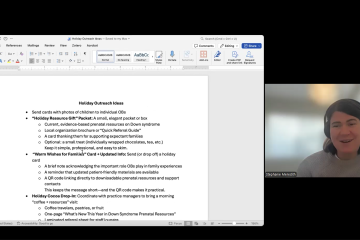We will be presenting the following sessions at the Down syndrome leadership conference in St. Louis, MO Feb. 28-Mar. 3, 2019:
Brace for the Changing Landscape of Prenatal Testing: What Every Affiliate Should Know 2:00 PM – 3:15 PM, Fri, Mar 1, 2019 by Mark Leach and Stephanie Meredith
Over the past year, prenatal testing labs have strongly lobbied ACOG and the federal government to recommend that non-invasive prenatal screening (NIPS) be offered to the entire population of nearly 4 million pregnant women each year. Currently, most national medical associations and insurers recommend and cover these newer blood tests only for “high-risk” pregnancies, so about 2 million women had taken the tests over the past 7 years, and the labs want to expand that market. If the labs are successful in their lobbying efforts, we can expect that the majority of babies with Down syndrome in the US will be diagnosed prenatally. This also means that the first point of the life course for most babies with Down syndrome will be shaped by the information and support they receive in that moment of receiving a prenatal diagnosis, and affiliates need to take solid steps to prepare.
Reaching Out to Medical Professionals to Give All Families a Lifeline at the Moment of Diagnosis 2:15 PM – 5:00 PM, Sat, Mar 2, 2019 by Sarah Cullen, Mark Leach, and Stephanie Meredith
In this session, you will learn learn comprehensive strategies for building strong medical outreach and new and expectant parent support programs. Good relationships with medical providers is the key to reaching new and expectant parents so that they can receive the most accurate and up-to-date information at that critical moment of diagnosis. Learn from experts the latest in prenatal testing technology and what is currently being done on a national level to provide information and support to new and expectant parents learning about a prenatal diagnosis of Down syndrome.
The session will also provide strategies to reach all new and expectant parents with particular attention to reach racially and ethnically diverse families at the moment of diagnosis. Find strategies to build coalitions with other patient advocacy groups and learn about current national and local medical outreach efforts.



0 Comments